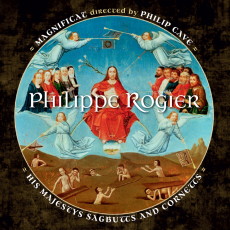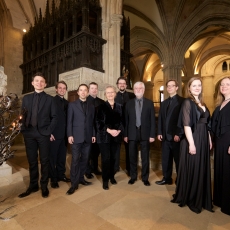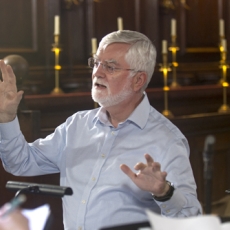Magnificat - Philippe Rogier - International Record Review
I jumped at the chance to review this new release, having thoroughly enjoyed Magnificat's first recording dedicated to Philippe Rogier made back in 1999 (CKD 109). Rogier (c1561-96) was one of a long line of musicians born in Flanders and recruited for the Royal Chapel of King Philip II in Madrid. His career started young, as a choirboy, and ended early, at the age of just 35. Nevertheless, he rose to the heights of maestro de capilla when still only in his mid-twenties and produced well over 250 works. Rogier's music would be much better known today had it not been for a fire at the royal palace in Madrid in 1734 and the infamous earthquake in Portugal in 1755 - which destroyed about four-fifths of his work. Happily, he published a volume of motets the year before his death and left five Masses for posthumous printing in 1598.
In its earlier recording, Magnificat mined these two publications for the glorious six-part Missa 'Ego sum qui sum' and six highly expressive funeral motets, all of which showed Rogier as a master of the flowing contrapuntal style of his Flemish forebears. This new recording paints the rest of the picture. The two Masses chosen here are his only settings to survive solely in manuscript and have been specially edited by Magnificat soprano (and musicologist) Sally Dunkley and Philip Cave himself. The motet which opens the programme, Domine Dominus noster, has recently surfaced in the Cathedral Archive at Valladolid and, after considerable editorial work, has been recorded here for the first time. The significance of all the music collected here is that it reflects the more progressive side of Rogier's musical personality. Although there are stretches of traditional imitative polyphony - as at the outset of Regina Caeli and Laudate Dominum - much of the time Rogier makes use of the more flamboyant, chordal, early-Baroque style pioneered in Venice by the Gabrielis. He certainly knew Andrea Gabrieli's music, since volumes of his motets and madrigals are mentioned in his will.
All seven works here embrace the splendid polychoral style beloved of the Venetians. Most magnificent of all are the motet Domine Dominus noster, the responsories Verbum caro factum est and Videntes stellam magi and the Missa 'Domine Dominus noster' - all in 12 parts divided into three choirs. The Missa 'Domine in virtute tua', on the other hand, is a double-choir parody Mass based loosely on Palestrina's eight-part motet of the same name. Even here Rogier's style is more chordal than contrapuntal, with very satisfying expanses of solid eight-part writing. The colour and excitement implicit in this music is brilliantly realized in these performances. Only in the model motet Domine in virtute tua by Palestrina do we hear the singers entirely on their own. In Rogier's Mass based on this motet an accompanying organ and bass dulcian are added to enrich the harmony and anchor the bass line, and in the three-choir works Magnificat is joined by His Majestys Sagbutts and Cornetts, plus continuo support from a lute and (much loved by the Spaniards) a harp. The precise deployment of the instruments is, of course, essentially editorial, but is done with great sensitivity to the text - intimate moments left simple, and Rogier's richly sonorous final cadences in the 'Gloria' and 'Credo' delivered with added weight and majesty. The antiphonal interplay between choirs vocal and instrumental is crisp and varied, and there are moments of melting beauty when solo voices emerge from the choral texture to be supported by the brass.
In my retrospective on The Tallis Scholars in the December 2010 issue I lamented their sometimes disappointing predictability of approach and tendency to homogenize the sound of sixteenth-century polyphony. Cave - a founder member of The Tallis Scholars - has always approached this repertory with more imagination. Here he avoids absolute consistency of tone, colour, attack, phrasing and rhythmic profiling, and allows the music plenty of breathing space, especially at sonorous cadences or where the inner parts move with exceptional beauty or interest. He also brings to the music just enough Venetian warmth and playfulness: sanctioning the improvisation of some splendid festal flourishes in the repeated refrains of the responsories, and letting the frequent triple-time passages positively dance - especially during the ringing 'Alleluias' in Regina Caeli.
The excellent recording - made at Henry Wood Hall, London - is very precise and revealing, though a fraction less atmospheric than Magnificat's first Rogier disc made at Douai Abbey. The full and informative booklet notes set the seal on an important release: it's no wonder that the American Musicological Society has recognized Sally Dunkley's and Philip Cave's work on Rogier with a distinguished Greenburg Awart. Warmly recommended in this double anniversary year: 20 years for Magnificat and 450 for Rogier.


